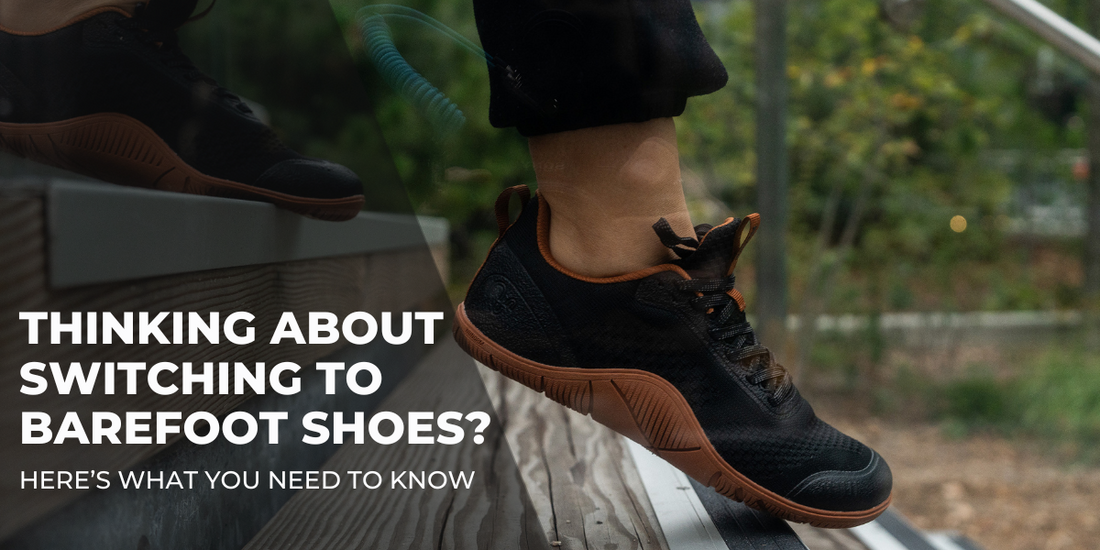
Thinking About Switching to Barefoot Shoes? Here’s What You Need to Know

Barefoot shoes have gained popularity in recent years, and for good reason. They offer a natural way to move, helping to strengthen your feet and improve overall posture. But if you’re new to the concept, you probably have a lot of questions. In this guide, we’ll answer common questions about barefoot shoes and explain why making the switch could be one of the best things you do for your foot health.
What Are Barefoot Shoes?
Barefoot shoes are designed to mimic the feeling of walking barefoot while still protecting modern surfaces. Unlike traditional footwear, they have:
-
Zero-drop soles: The heel and toe are at the same level, promoting natural posture and alignment.
-
A wide toe box: Allows your toes to splay naturally, reducing pressure and improving balance.
-
Minimal cushioning: Encourages foot muscles to engage, strengthening them over time.
-
Flexible soles: Allow your feet to move and adapt to terrain naturally.
Why Should You Consider Switching?
Modern footwear often forces our feet into unnatural positions, leading to issues like weakened arches, foot pain, and poor posture. Barefoot shoes work to undo this damage by allowing the foot to move as nature intended. Benefits include:
-
Improved Foot Strength: Engaging foot muscles that are often neglected in traditional shoes.
-
Better Balance & Stability: A wider toe box and direct ground contact improve balance.
-
Enhanced Posture & Alignment: Barefoot shoes help maintain a natural stance without an elevated heel.
-
Reduced Risk of Injury: Strengthening foot muscles can lower the risk of common foot problems like plantar fasciitis.
Common Questions About Barefoot Shoes
1. Will Barefoot Shoes Hurt My Feet at First?
It’s normal to feel some discomfort when transitioning as your feet and lower leg muscles adjust to increased engagement. This is why it’s important to transition gradually.
2. How Do I Transition to Barefoot Shoes?
Start by wearing them for short periods and gradually increase the duration. Incorporate foot-strengthening exercises like toe stretches, calf raises, and barefoot walking to help with adaptation.
3. Can Anyone Wear Barefoot Shoes?
Yes! Whether you have flat feet, high arches, or a history of foot pain, minimalist shoes can help restore natural movement patterns. However, those with existing conditions should transition carefully and consult a professional if needed.
4. Are They Only for Running?
No! While many runners swear by barefoot shoes for their natural gait benefits, they’re also great for everyday walking, gym workouts, hiking, and even casual wear.
5. Do I Need Special Socks?
You don’t have to wear socks, but if you prefer to, opt for thin, toe-separating socks that allow natural toe movement.
How to Get Started
If you’re ready to experience the benefits of barefoot shoes, follow these steps:
-
Choose the right pair: Look for zero-drop soles, a wide-toe box, and flexible materials.
-
Take it slow: Wear them for short walks before committing to full-day use.
-
Strengthen your feet: Incorporate exercises to prepare your muscles.
-
Listen to your body: Adjust as needed to avoid discomfort.
Our Recommendation:
At Spacer Mobility, we’ve tested barefoot-style shoes to find the best foot-friendly features. The Classic from NUNORM embodies everything a great barefoot shoe should be:
✔ Zero-Drop Design – Promotes natural posture and balance.
✔ Wide Toe Box – Allows for natural toe splay and improved stability.
✔ Flexible Sole – Encourages foot strength and mobility.
✔ No Toe Spring – Keeps toes in a neutral position for optimal function.
If you’re looking for a way to transition to barefoot-style shoes while keeping your feet comfortable and strong, check out NUNORM Classic, is a great place to start!
